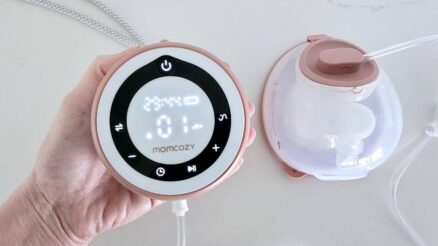The evolution of wearable technology and its impact on health has been a game-changer over the past decade. From basic pedometers to advanced smartwatches, wearable devices have transformed how we monitor and manage our well-being. To learn more about the latest advancements, visit Digisimhub. This article explores how wearable technology has evolved and the significant impact it has had on our health and lifestyles.
The Beginning: Early Wearable Technology
The evolution of wearable technology began with simple devices like pedometers and heart rate monitors. These early gadgets helped people track their physical activity and monitor their fitness goals. They were basic, yet paved the way for more sophisticated wearables that would eventually dominate the health and fitness market.
Early wearables were primarily focused on tracking steps or heartbeats, giving users a glimpse of their physical activity. The popularity of these devices showed that people were interested in monitoring their health and fitness, laying the foundation for the wearables we see today.
The Rise of Smartwatches and Fitness Trackers
The introduction of smartwatches and fitness trackers marked a significant milestone in the evolution of wearable technology. Companies like Fitbit, Garmin, and later Apple, began to develop devices that not only counted steps but also monitored heart rate, sleep patterns, and calories burned. These devices became incredibly popular due to their ability to provide real-time health insights and track progress.
Smartwatches took things a step further by combining health tracking features with smart device capabilities. Users could receive notifications, set reminders, and even answer calls—all from their wrist. This combination of health and convenience made wearables a must-have accessory for tech-savvy individuals.
Wearable Technology and Health Monitoring
Wearable technology’s impact on health became more evident with the development of devices capable of tracking vital signs in real time. Wearables now monitor a range of health metrics, such as blood oxygen levels, stress levels, and even electrocardiograms (ECGs). These features help users understand their health better and take preventive actions when needed.
Fitness trackers and smartwatches have also made it easier for individuals to manage chronic conditions. People with heart conditions, for instance, can use wearables to keep track of their heart rate and receive alerts if irregular patterns are detected. This real-time monitoring empowers users to take control of their health and seek medical assistance when necessary.
Smart Clothing: The Next Step in Wearable Tech
Smart clothing is another step forward in the evolution of wearable technology. Smart fabrics embedded with sensors can monitor heart rate, temperature, and even muscle activity. These clothes provide a seamless way to track fitness without the need for additional gadgets, making them ideal for athletes or anyone looking to monitor their physical performance.
Smart clothing can also assist in rehabilitation by monitoring how muscles move and providing feedback on exercises. This technology allows for personalized workouts that cater to individual needs, further demonstrating the impact of wearable technology on health.
The Impact of Wearable Technology on Fitness and Lifestyle
The impact of wearable technology on health is not limited to medical monitoring; it has also revolutionized fitness and lifestyle. Wearables motivate people to stay active by providing daily goals, reminders, and encouraging feedback. Features like step counting, calorie tracking, and exercise logs have made it easier for users to maintain a healthy lifestyle.
Many fitness trackers come with social features, allowing users to compete with friends or join fitness challenges. This social aspect has added an element of fun and accountability, motivating more people to get moving and stay active. Wearable technology has made fitness more accessible and engaging, helping users achieve their health goals.
The Role of Wearables in Mental Health
Wearables have also started to address mental health, another crucial aspect of well-being. Many smartwatches and fitness trackers come with features that monitor stress levels and provide breathing exercises to help users relax. By tracking sleep patterns, wearables also offer insights into sleep quality, which is closely tied to mental health.
The evolution of wearable technology has enabled a better understanding of how daily activities impact mental well-being. Wearables provide feedback on stress triggers and suggest ways to manage anxiety, contributing to overall health improvement.
Wearable Technology in Healthcare: A Tool for Doctors and Patients
The impact of wearable technology on health extends to the healthcare industry, benefiting both patients and healthcare providers. Wearables provide doctors with real-time data about their patients, which can lead to more accurate diagnoses and personalized treatment plans. Patients can also share their health data with doctors, making it easier to track progress and adjust treatments accordingly.
During the COVID-19 pandemic, wearables played a critical role in monitoring patients remotely. Devices that tracked oxygen levels, heart rate, and temperature became essential tools for healthcare professionals, helping them manage patients from a distance.
Explore more : https://digisimhub.com/
The Evolution of Wearable Technology for Seniors
The evolution of wearable technology has also brought significant benefits for seniors. Wearables like medical alert bracelets and fall detection devices provide a sense of security for older adults and their families. These devices can automatically alert emergency services if a fall is detected or if the wearer needs help.
Smartwatches with health tracking features are also popular among seniors, allowing them to monitor their heart rate and stay active. By providing peace of mind and promoting independence, wearable technology is enhancing the quality of life for older adults.
Challenges and Limitations of Wearable Technology
Despite the impact of wearable technology on health, there are challenges and limitations. Battery life, data privacy concerns, and accuracy of the data collected are some of the issues users face. Many wearable devices require frequent charging, which can be inconvenient, and some users may be concerned about how their personal health data is stored and used.
Another challenge is the accuracy of the data collected by wearables. While these devices provide useful insights, they are not always 100% accurate, which can sometimes lead to misunderstandings about one’s health status. Addressing these challenges is essential for the continued success of wearable technology.
The Future of Wearable Technology and Its Impact on Health
The future of wearable technology and its impact on health is promising. As technology advances, wearables will become more sophisticated, with improved sensors and better integration with healthcare systems. Wearables will likely play a larger role in preventive healthcare, helping people identify potential health issues before they become serious.
We may also see the rise of new types of wearables, such as smart contact lenses and implantable devices that provide even more detailed health monitoring. With continued innovation, wearable technology will further revolutionize how we manage our health and well-being.
Conclusion: The Lasting Impact of Wearable Technology on Health
The evolution of wearable technology and its impact on health has been significant. From simple step counters to advanced health monitoring devices, wearables have changed how we take care of ourselves. By providing real-time data, encouraging fitness, and supporting medical monitoring, wearable technology has become an essential part of modern life. Just as the TOP TREND IN COMMERCIAL OUTDOOR FURNITURE focuses on innovation and convenience, wearables continue to evolve, making health management more accessible and effective. As technology continues to evolve, the role of wearables in healthcare and everyday well-being will only become more important, connecting us with our health in ways we never thought possible.





